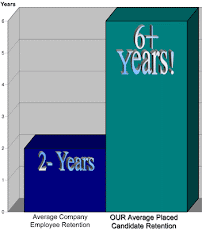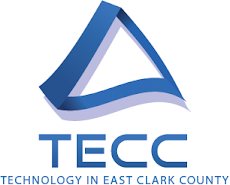His focus is in recruiting engineering and management professionals within emerging vehicle technology companies; Commercial ground transportation, Alt Fuel, ITS.
Thursday
Turnover Does Not Have To Be Inevitable
Unemployment is now at 4.3%.
More businesses are planning to hire.
Your staff begins to get those calls. You know
which calls I mean – the ones from recruiters.
Managers and executives have to face a fear
that they have been procrastinating for some time, the moment they realized
that they aren’t ready for any
upturn in economic activity.
As unemployment lowers, this is great news for
the economy. It also presents more challenges for executives and management who
are trying to surface, hire and retain great people.
As little as one person leaving your company
could have crippling effects in revenue and product innovation.
Is your staff getting calls from recruiters
yet? Those calls should be a good sign for you. They are a sign that the
economy really is growing. However, turnover does not have to be inevitable.
Beyond their relationship with their managers, how employees perceive the
senior leadership of your company and the support you give them, may determine
whether they take those recruiters’ calls or don’t.
If you think of your company as a Vehicle,
imagine that your employees are the engine. As the leader, you are the ECU that
keeps the engine running efficiently. As production ramps up, your vehicle
needs to kick into high gear and sustain it for a long period of time as more
orders have to be filled. While this new pace in our economy is energizing over
the last few years of sluggishness, management needs to ask itself, “How can
our leaders make the difference between sluggish
and high performance?”
Evidence continues to mount linking engagement
with productivity and because business is steadily improving, ensuring your
workforce is fully engaged is critical to your firm’s success. Human resources are warning operating
executives of potentially crippling turnover ahead if management does not get
out in front of the issue now.
“Employee engagement” was defined in a 2008
Global workforce study by Tower-Watson as “the level of connection employees
feel with their employers as measured by their willingness to help their
company succeed”. Research shows that employees will go above and beyond for an
employer they feel a personal connection with. It is this heightened level of
communication that an employer should look for to harness in its teams. If your
executive management team consistently works to foster high engagement, its
employee will reward it with their best efforts each and every day. Conversely,
if employees get the message that they are not valued, engagement wanes and
along with it – productivity.
So how critical is it to power your people to
produce at their best? One in five
workers admits to giving their full discretionary effort on the job according
to The Conference Board’s 2010 study on Job Satisfaction. It also showed that
fifty five percent (55%) of US workers are unhappy with their jobs – the
highest since the annual survey began in 1987.
One third of employees are seriously considering leaving their jobs
according to a poll by HR consultants Mercer, LLC. Unhappy employees are likely
to produce much less, opting instead to spend work time searching job boards,
playing games on Facebook, and shopping on-line. So not only should management
be concerned about productivity decline but also be concerned about disengaged employees
who have mentally “checked out” and warming a valuable seat in the office
costing you revenue --pure and simple. In fact, the Gallup Organization
estimates that “actively disengaged” workers cost US businesses up to $300
Billion per year.
Maybe you are reading this and saying to
yourself “my people are engaged, operating fully charged”. Before you dismiss
the premise, understand that disengaged employees are hard to spot. With company
consolidations, mergers and acquisitions, and automation being high, people remain fearful for their
jobs so it is more likely that someone who is not committed to the company is
hiding their dissatisfaction from management. After all, who wants to lose
their job because they complain? So they show up, but not really there, thus
produce very little.
Historically, as business begins to improve
coming out of slow economic growth, companies find they are less and less able
to sustain productivity and are forced to hire. When that happens, unemployment
declines and workers start to have choices again. That spells serious trouble for
business managers and executives who have ignored the welfare of their
workforce during slow times as key people leave for greener pastures. You may
have already seen it starting to happen with sales and business development
people in the industry. If you haven’t, now is the time to get involved with
your subordinates’ success.
STRATEGIES
FOR POWERING YOUR PEOPLE
Here are some strategies to drive productivity
and to mitigate employee defection to your competitors:
Be visible in the field regularly
In clients I have worked with, I noticed that
top executives and managers do not isolate themselves. They practiced Management By Walking Around. Immersing
yourself among all your people and investing your time strolling around the
manufacturing floor and communicating with the lowest man on the ladder will
give you valuable information and a tremendous return of investment.
How many presidents know the first name of
their machine operators or maintenance manager? Just by knowing someone’s first
name and acknowledging him in his workplace bring a phenomenal engagement and
loyalty. Studies show that employees who
perceive that their big boss really identifies with their day to day challenges
and is working to alleviate them will reward the company with full engagement
and high productivity in return.
Strive
for excellence, not perfection
Capitalize on what employees are best at.
Concentrating on the capabilities of individual workers and making them
partners in setting goals motivate people to strive for optimal performance in
their greatest area of strengths.
Do not focus on what they cannot do, but rather
ask them what they can commit to. When employees work hard at what they are
best at, the result is higher quality to the client.
Trust + Fun = results
In these times of layoffs, it may seem hard for
employees to trust management. That mistrust is quite evident – just open any
newspaper and you will see. As the manager, you need to find ways to build that
level of trust. Once employees see that you “have their backs” they will begin
to put out more for you. One thing you can do is to encourage employees to step
out on the edge – to feel free to make mistakes. It is how people learn. If
something goes wrong, sit down and talk about what the employee’s intent was
and how the outcome could be achieved by using an alternate approach.
Another way to grow trust is informal
recognition. People thrive on recognition. The more you can sincerely recognize
people, especially in front of peers, the more trust and productivity you will
earn. Involving your team in local community events such as the annual bath tub
races or working together on a corporate float for the local parade gives
employees an opportunity to disengage from the stress of the office and have a
good time together.
With employee disengagement at an all time high
while the demands for productivity are ever increasing, it is more important
now more than ever for executives and managers to take on personal
responsibility for the productivity of the company’s workforce. Take action to implement strategies to
consistently demonstrate that you understand and are responsive to the
challenges of those on your team.
Recognize and celebrate the individual strengths of each contributor,
create an environment of trust, and make work more fun. Remember, your people are just one
recruiter’s call away.
-
Gary Perman
Gary Perman is past Chair of IEEE – Oregon Section and
member of IEEE TEMS. He is also President of PermanTech and an expert in
headhunting critical talent since 1996.
His focus is in recruiting engineering and management professionals within emerging vehicle technology companies; Commercial ground transportation, Alt Fuel, ITS.
His focus is in recruiting engineering and management professionals within emerging vehicle technology companies; Commercial ground transportation, Alt Fuel, ITS.
Subscribe to:
Posts (Atom)
















